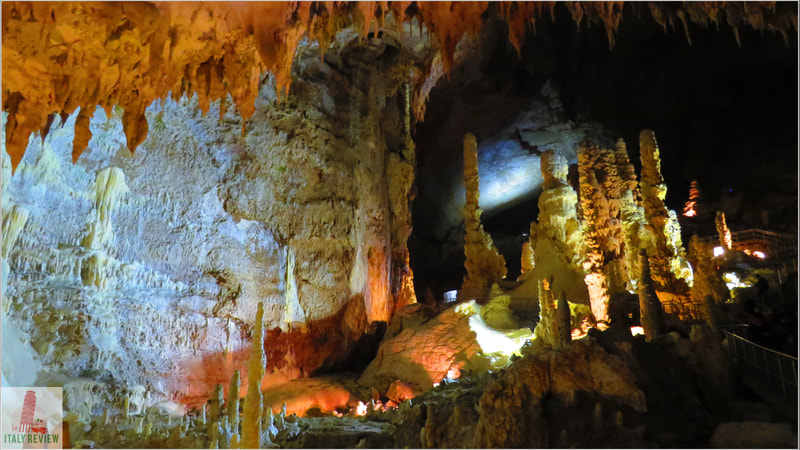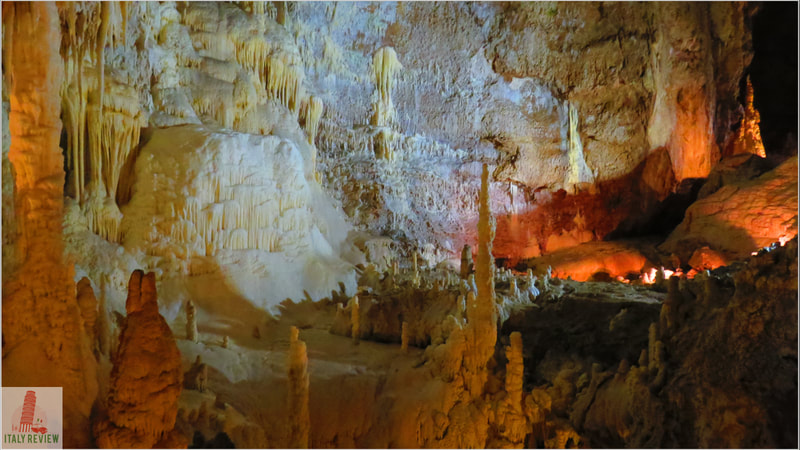Frasassi Caves
|
By Dion Protani
|
Latest update: 15 January 2024
|
|
The Frasassi Caves are situated within the Province of Ancona and belong to the Comune of Genga. The labyrinthine cave area descends to a depth of 400 metres and climbs to a maximum elevation of 300 metres above sea level.
Nearby places of interest include the Gola Regional Nature Park, the Santuario Madonna di Frasassi and the town of Fabriano. |
Related links
Profile
The Frasassi Caves, also known as the Grotte di Frasassi, are a spectacular underground network of caves located in the Marche region of Italy. They are considered one of the most remarkable cave systems in Europe and attract visitors from all over the world with their stunning stalactites, stalagmites, and other fascinating limestone formations.
The Caves were formed over millions of years by the erosive action of water on the limestone rocks of the Apennine Mountains. The caves extend for approximately 30 kilometers (18.6 miles), although only a small portion is open to the public. The main section of the caves, known as the "Ancona Abyss," is the most impressive and accessible part for tourists.
Visitors to the Frasassi Caves are guided through a series of well-lit pathways and chambers, revealing jaw-dropping sights such as the immense "Grotta Grande del Vento" (Big Wind Cave) and the "Abisso Ancona" (Ancona Abyss), a massive underground chamber. The stalactites and stalagmites are in various shapes and sizes, and the formations take on imaginative names such as "the Organ Pipes" and "the Snowy Cascade."
The Caves were formed over millions of years by the erosive action of water on the limestone rocks of the Apennine Mountains. The caves extend for approximately 30 kilometers (18.6 miles), although only a small portion is open to the public. The main section of the caves, known as the "Ancona Abyss," is the most impressive and accessible part for tourists.
Visitors to the Frasassi Caves are guided through a series of well-lit pathways and chambers, revealing jaw-dropping sights such as the immense "Grotta Grande del Vento" (Big Wind Cave) and the "Abisso Ancona" (Ancona Abyss), a massive underground chamber. The stalactites and stalagmites are in various shapes and sizes, and the formations take on imaginative names such as "the Organ Pipes" and "the Snowy Cascade."
History
The Frasassi Caves were discovered in 1971 by a group of Italian speleologists, and their exploration has been ongoing since then. The caves have been formed through the continuous action of water that dissolved the limestone and created intricate underground galleries over millennia. The caves hold great geological significance, providing valuable information about the region's past and the processes that shaped the landscape.
Key features
- Guided Tours: Access to the caves is allowed only through guided tours to preserve their delicate ecosystem. Professional guides lead visitors through the caves, providing information about their geology, history, and the fascinating formations.
- Opening Hours: The caves are open to the public year-round, but hours of operation may vary depending on the season. It is recommended to check the official website or contact the visitor center for updated information.
- Ticket Information: Visitors can purchase tickets at the entrance or, during peak seasons, it is advisable to book tickets in advance to secure a spot on the tour.
- Dress Code: The caves maintain a constant temperature of around 14°C (57°F) throughout the year, so it's essential to bring a light jacket or sweater. Comfortable shoes are also recommended as the pathways can be uneven and slippery.
- Photography: Photography is permitted inside the caves, but the use of flash is usually restricted to protect the delicate formations.
Grotte di Frasassi
|
Comune: Genga
Province: Ancona Region: Marche Depth: 400 metres Elevation: 300 metres Close by: Gola della Rosa e di Frasassi Park, Sassoferrato, Fabriano Recommended accommodation: Hotel Le Grotte (3 km) |























